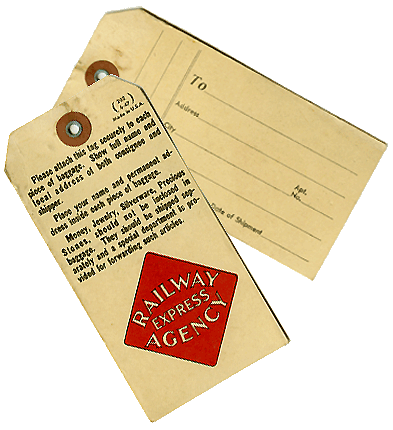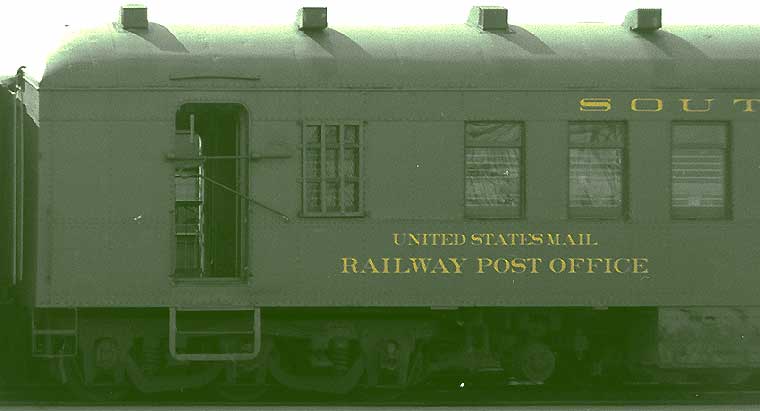As fundamental institutions in American society, the U.S. Mail's Railway Post Office and the Railway Express Agency's baggage car business died in 1967, although they weren't officially pronounced dead until years later - 1975 for REA and 1977 for the RPO. In the fall of '67, the Postal Service cancelled most of its railroad mail contracts, thereby yanking governmental life support on hundreds of money-losing or marginally-profitable passenger runs. On the Coast Route, loss of the RPO after September 30 was last straw for the Lark, which succcumbed the following spring.
Following the loss of the mail contracts, a long line of barely broken-in, two-and-one-half-year-old 82' postal-baggage/storage cars formed at Bayshore yard. They were still there in 1970, when this photo was taken. These cars were constructed in two groups: 5020-5029 (two cars on right) rode on six wheel trucks and contained a 30' RPO / 52' baggage arrangement. Cars 5030-5036 (three cars on left) rode on six wheel trucks and featured a 60' RPO and 22' baggage room. The latter operated on the Lark, and the entire series allowed the system-wide replacement of Harriman-style RPO's, as seen above.
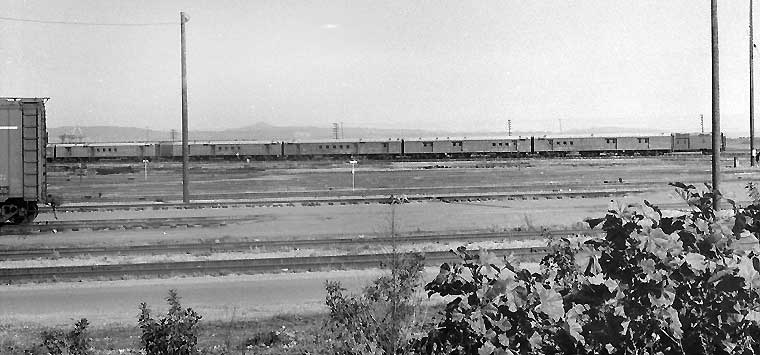
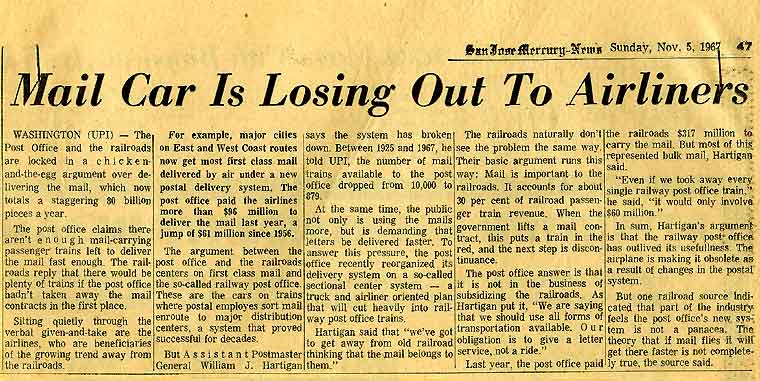
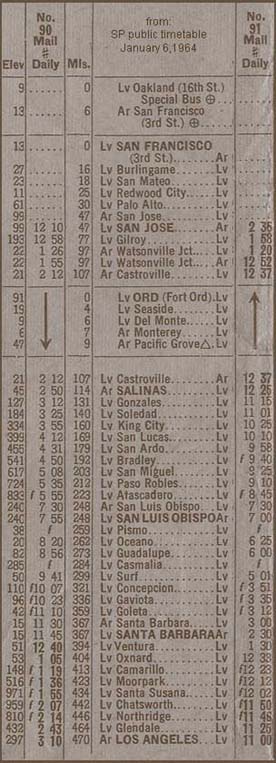
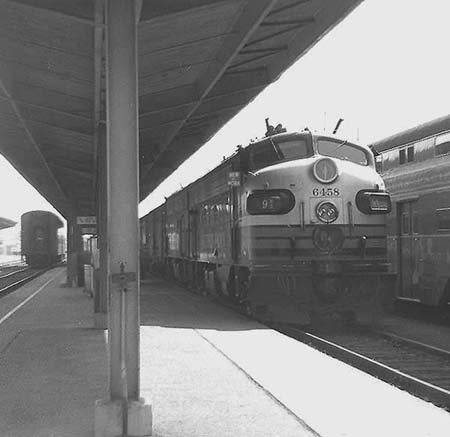
Save the Lark's RPO, the mail and express business effectively had quit the Coast Line a couple of years prior, in May 1965, with the last runs of what was variously and unofficially called the Coast Mail or the Sad Sam, but which was listed in the timetables merely as "Mail". This was truth-in-advertising, since the passenger accomidations typically consisted of a single, elderly 60 foot Harriman rider coach borrowed from the Commute pool, as seen in the below photo.
After April 1960, the train became a 'semi'-passenger. Until that time, it was a strictly Coast Route affair, LA to SF. It's Oakland cars were forwarded on train 255, the Oakland Daylight connection, and received from train 74, the Oakland Lark. Effective May first, SP dropped all Oakland-to-San Jose passenger service, and re-routed the mail trains to the Oakland side. Most of the traffic went that way, anyhow. San Francisco traffic was switched-out (photo) to and from Commute trains 151/110 in San Jose. The rider coach became 'employee-only" north of San Jose.
Western Division crews manned #90/91 north of San Jose, and on the Coast side, the crews from the San Luis Obispo-to-San Jose leg also worked Commute trains #151/154 on the Peninsula.
Ryan and Shine's Southern Pacific Passenegr Trains of the Coast Route, Volume I states that, starting in 1963, the trains became #151/154 south of San Jose (but still #90/91 north of San Jose), and that the Mail's power worked Commute #151/154 north of San Jose, with different power for the Oakland leg. This doesn't make alot of sense for several reasons, and besides, the 1964 timetable at left still shows the trains as #90/91, and the power shown above in May, 1964 worked through San Jose to Oakland. Perhaps, prior to 1963, separate crews worked the Mail and Commute legs, with one crew handling the entire territory after that.
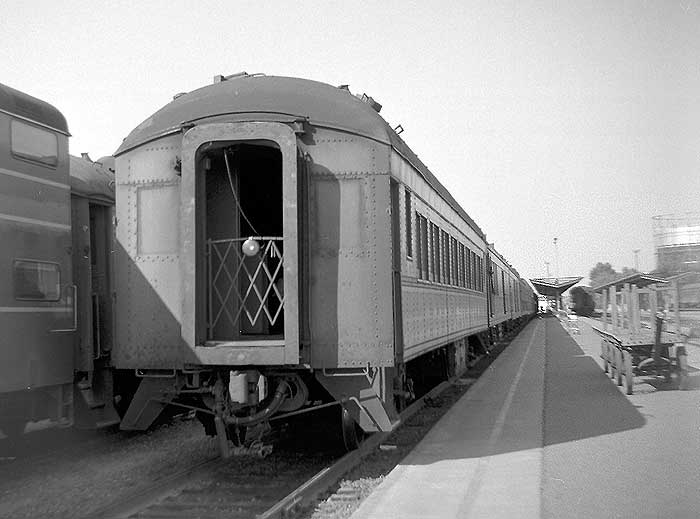
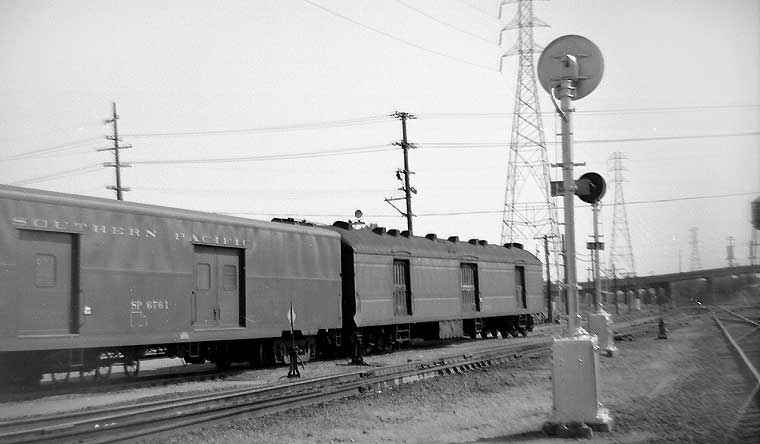
Above is a photo of #91/151's San Jose setout that day: nearly new "Econo-Baggage" #6761 (see page bottom), and a 70' baggage-horse car, number unknown. The cars were located on a long-gone spur next to the Channel 11 TV parking lot. Look closely, and you'll see a baggage cart being loaded behind the 6761 for transfer to the depot baggage and express room. (Yep, the photos are fuzzy, but my camera was a freebie box camera handed-out by Bank of America for opening a savings account)
Here's the consist of that day's train.. It was very typical of springtime during the early 1960's. The express reefers probably contained strawberries, and typically were not present in such quantity at other times of the year.
Coast Mail #91, Spring 1964 at San Jose
FP-7 #6458 in "Black Widow" colors
F-7A #6389 in "Black Widow" colors
4 = REA Express reefers
2 = "Economy Baggage Cars" (lightweight baggage-express car)
1 = "Economy Baggage Car*
Heavyweight Harriman-style 70 foot horse-baggage car, two-tone grey colors*
"Streamlined" heavyweight baggage-express car #6085, in ex- San Joaquin Daylight colors
Heavyweight Harriman-style 70 foot postal-baggage #5133, grey color (in faux geen at page top)
Harriman 60 foot, 72 seat Commute coach, two-tone grey colors
Click here for the cars page.
Like todays UPS, which began to flower at about the time of REA's final demise in 1975, these cars carried anything and everything, as you can see below: cremation remains to Forest Lawn; coins to the LA Fedral Reserve Bank; silverware from Albuquerque; a fur to Mrs. Brozelton at Victor, Idaho; assorted store merchandise offloaded at SLO and bound for Atascadero via Pacific Motor trucking (Atascadero was a passeneger flag-stop, so the train schedule probably didn't allow for on/off-loading of express); etc, etc,.
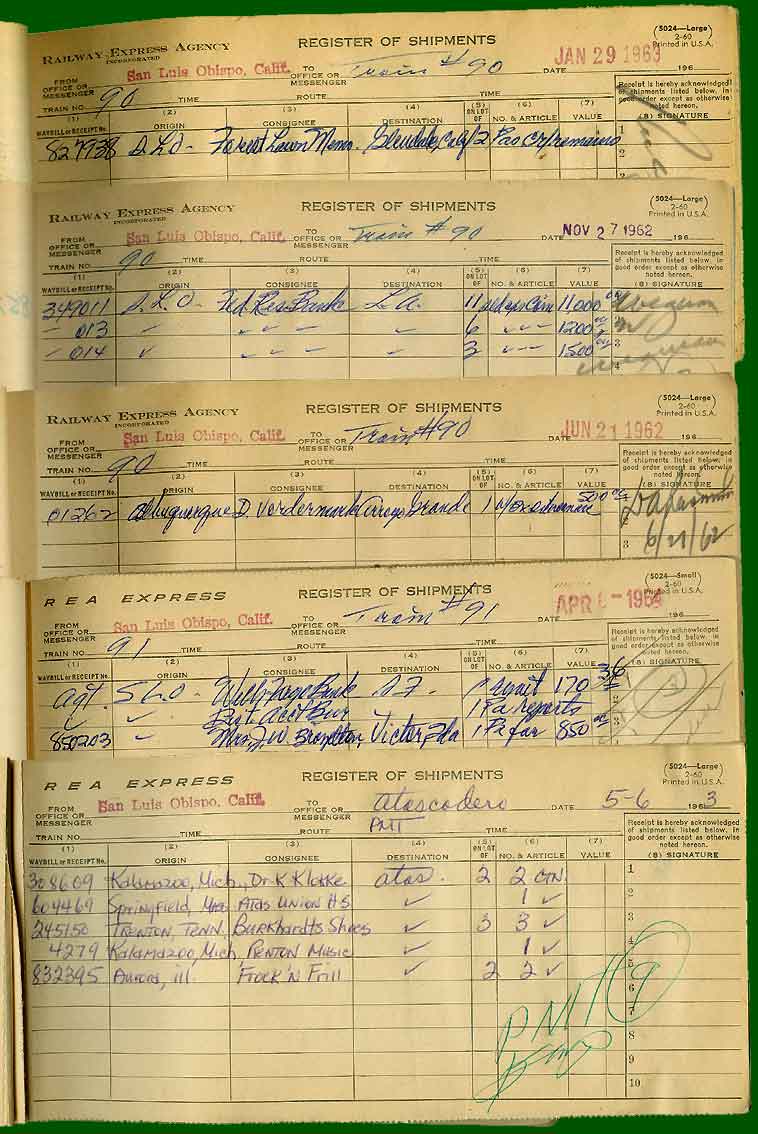
In addition, the Coast Mail acted as a baggage car for the Daylight and Lark. If desired, a REA truck would pick-up a patron's luggage at his/her doorstep on the day prior to departure, for forwarding to the destination via the mail train. Maybe you've noted that some of the above registers say Railway Express Agency, while others say REA Express (REA over a large 'X' was substituted in place of the spelled-out name on the diamond logo; see reefer, below). About this time, REA had begun to re-invent itself as part of an attempt to hang on to the express business.
On SP, truck shipments were either handled by REA company trucks, or under contract with PMT. At right is a 1950's Daylight-painted PMT trailer used at storage at the College Park piggyback ramp in 1968. Below is a REA company delivery truck parked in front of the Santa Cruz depot in 1971 (with the S.C. Local switching in the background; another, more artsy, pic from that afternoon appears on page 163 of Bruce MacGregor's Narrow Gauge Portrait, South Pacific Coast).
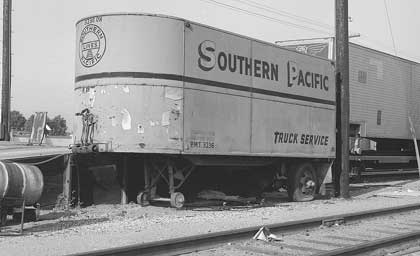
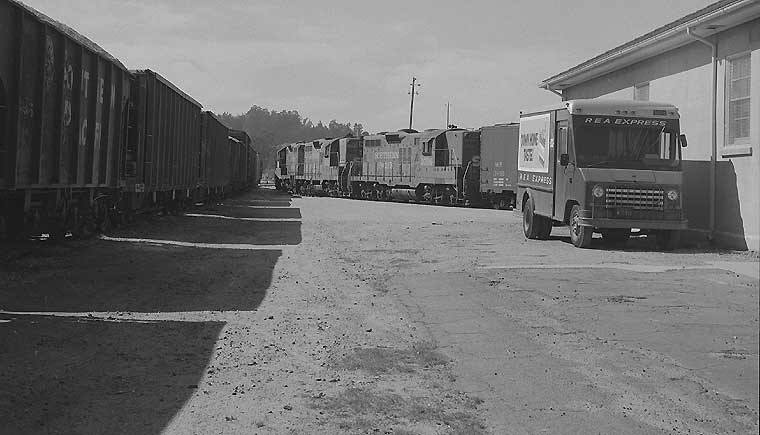
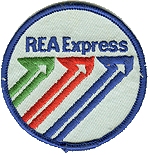
At the time of the above photo, the company had re-invented itself yet again, adopting a new logo as seen on the patch at left, and a new yellow and blue paint scheme for its delivery trucks ("REA Rides Again!" "Up, up and away, with REA!"). To no avail: in 1974 the Civil Aeronautics Board ordered the airlines to terminate REA contracts, and in 1975 REA declared bankruptcy.

